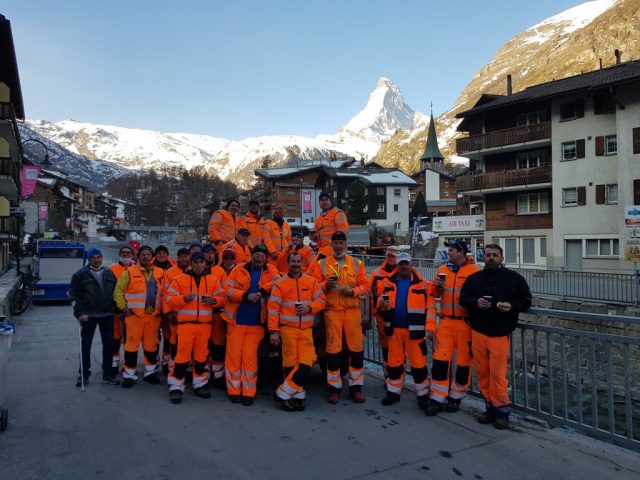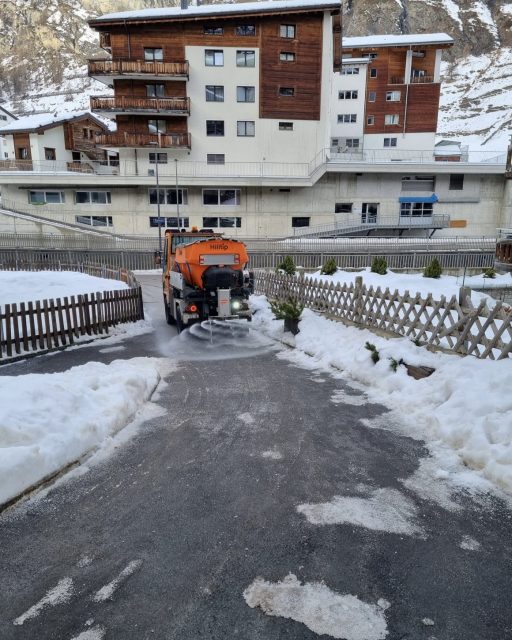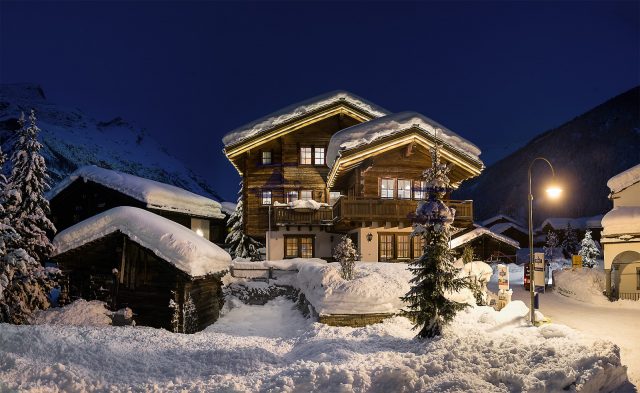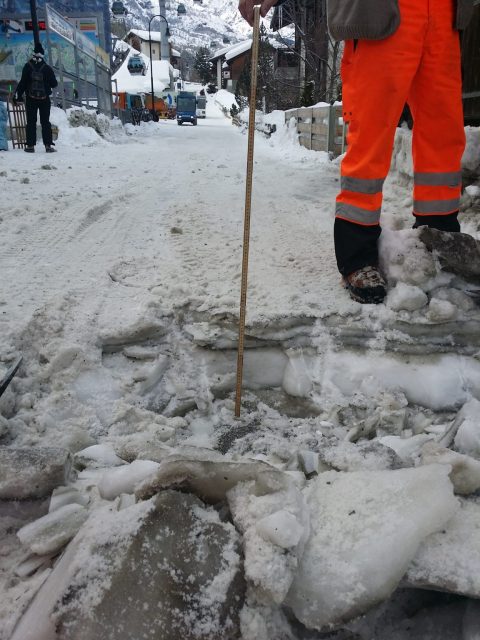We are often asked how salt is used in Zermatt to stop the streets and roads of the resort from icing up during winter.
In the first of a series of blog posts about the challenges of keeping our village accessible and pedestrians safe, we look at how the resort uses salt to prevent ice. In part two, we look at why the streets are kept clear of snow.
What is salt and how does it work?
This may seem a strange question, but the salt that is used in Zermatt is pure, natural sodium chloride.
The chemists among you will already know that the positively charged sodium and negatively charged chlorine ions attach themselves to the water molecules on the top layer of ice and consequently release them (i.e. thaw the ice!)
Are there alternatives to salt?
Not really. Salt is the most effective way to deal with ice. Previous experiments with wood chips and grit are not effective methods of road maintenance. They don’t thaw the ice and require large volumes, which also generates additional transport and storage costs. Wood chippings can also clog up the sewage system.
When is the salting done?
Zermatt’s focus is on ‘preventative salting’, which means that the salting has to be done before the snow comes down. When it starts to snow, it can often be a race against time for the dedicated clearance team.
The streets need to be wet so that the salt will ‘stick’ and prevent snow from settling. If the snow doesn’t settle, then it can’t be compacted down by traffic and freeze into a layer of ice.
If larger quantities of snow come down, then it will be ploughed off the roads, as the effect of the salt wears off after 3-4 hours. Once ploughed, the roads will need to be salted again.

How is the salt spread and how much is required?
Using different vehicles, the Zermatt team can set the amount (0-60g/m2) and spreading distance (1-5.5m) precisely.
Because of the weight of the salt, it’s sometimes not possible to drive the salt spreaders up steeper slopes and it has to be distributed by hand.
Only small amounts of snow are needed to melt snow. The Zermatt team work on a rule of 6-12g of salt per square metre.
The use of salt is also made more efficient by removing snow that has been pushed to the side of the road by the snow plough. Without doing this, this snow will melt and then wash away and dilute the salt that has been put down.

Accommodation in Zermatt
If you’d like to visit us and find a serviced chalet or apartment in Zermatt, then please contact the Matterhorn Chalets team on +41 79 247 15 88

